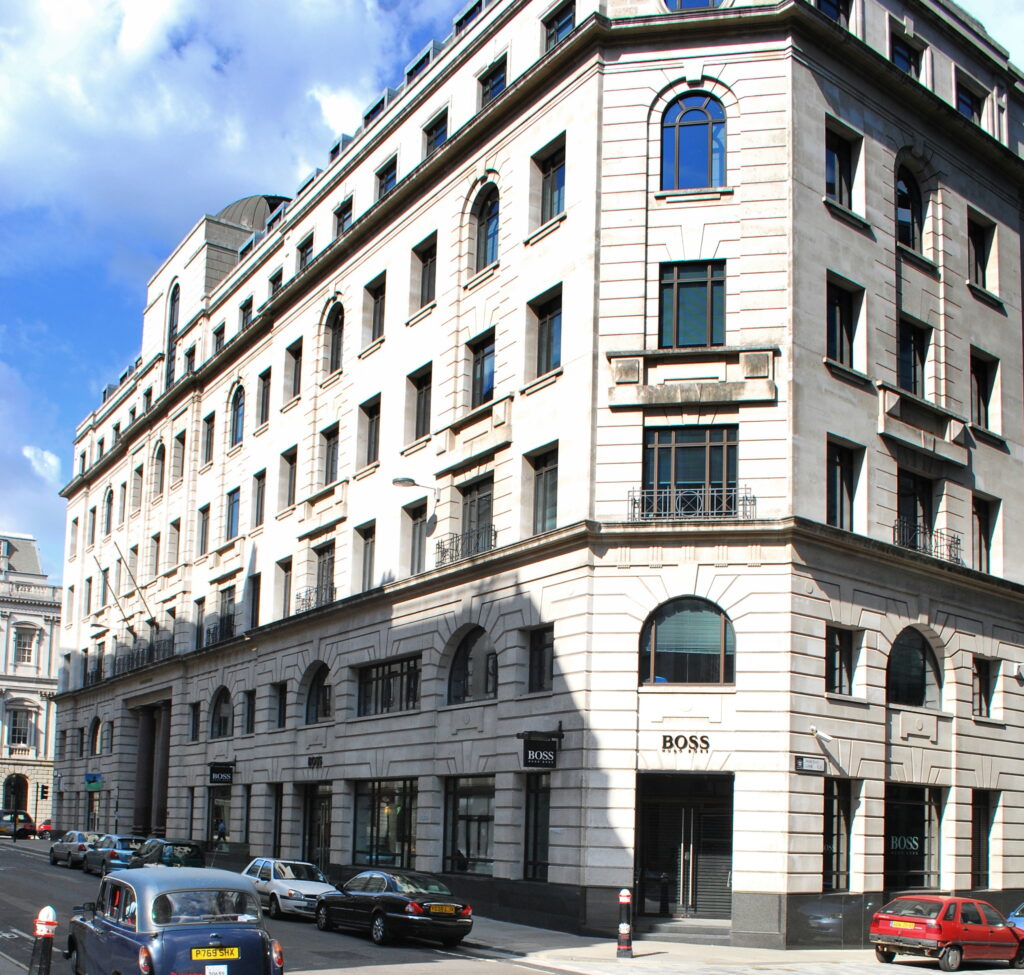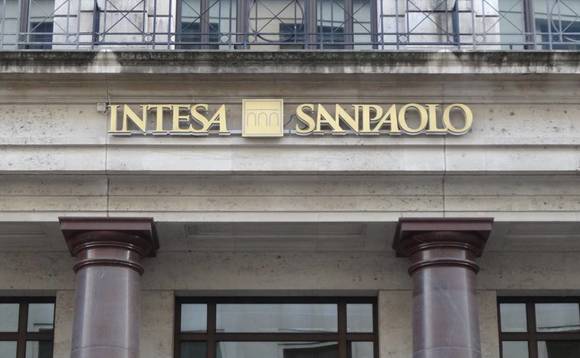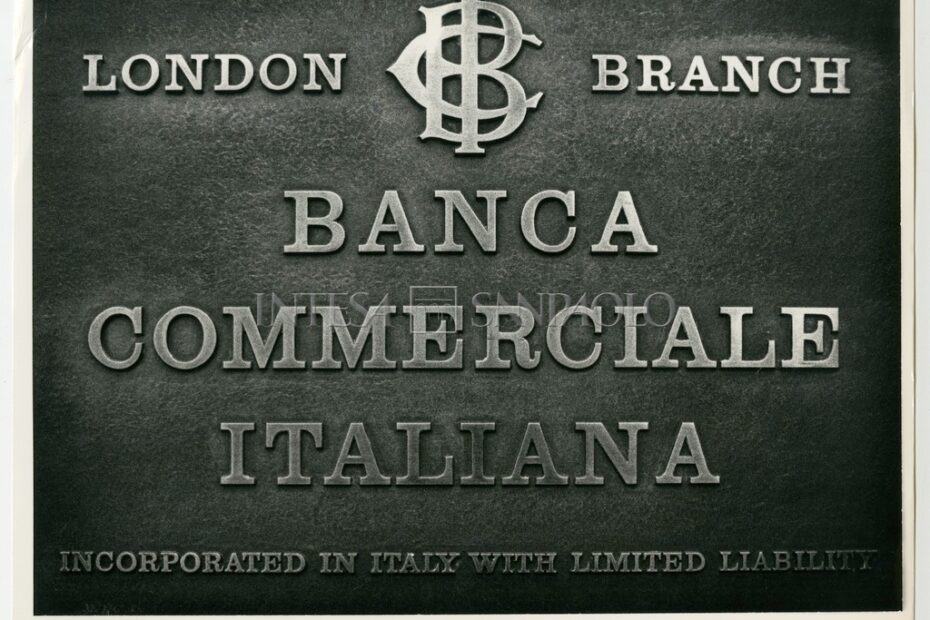Now Banca Intesa Sanpaolo
90 Queen Street and 70-72 Cheapside, EC2
Built: 1990-96
Architect: Fitzroy Robinson Partnership
Location: King Street and Queen Street
Listing: not listed

Unlike many of the C19 and early C20 buildings we have profiled on this website, it is less common for buildings of more recent construction to have been commissioned ex-novo by the occupant. The large complex at 90 Queen Street, occupying a corner site with Cheapside, is one such case.
Banca Commerciale Italiana, often abbreviated to BCI or ‘Comit’, was founded in 1894, largely with foreign capital. It rapidly became one of the main commercial banks in Italy. After a protracted period as an independent bank (even when controlled by the Italian government, via its IRI conglomerate), at the turn of C21 it merged with Banca San Paolo to create the Banca Intesa group.
BCI first opened a full branch in London, on Broad Street, in 1911, just a few months after its main Milan-based competitor, Credito Italiano had done so. Among other things, it became the Italian government’s ‘house’ bank in London. Soon thereafter, further offices were opened in the West End and Soho (then home to a substantial Italian immigrant community). In the early 1920s, the CIty branch moved to 32 Threadneedle Street. The advent of war in 1940 caused the branch to be shut but a representative office re-opened in 1947, changing location often. In 1971, a full branch was re-established at 42 Gresham Street, where it remained until its move to 90 Queen Street, rather nearby, in 1998.
The rather large complex occupies the plots of nos. 72 through 75 on Cheapside and nos. 84 through 93 on Queen Street. The courtyard it envelops on two sides, along Pancras Lane, is the site of the former burial ground for the church of St Pancras.

The arrangement of the Cheapside and Queen Street facades is rather irregular counting seven bays on Cheapside, a canted corner, then some 19 bay along Queen Street, another canted corner and a return along Pancras Lane. The main entrance, featuring a simplified Doric aedicule, is offset towards the north, rather than central to the Queen Street aspect. Despite all that, the repetition of several ornamental devices gives the whole a sense of unity. The latter include the alternation of flat and arch-headed fenestration, banded rustication of the base and main body as well as a subsidiary and main cornice. The classical detailing is of the stripped type, rather lightly applied. Similarly, the main entrance is very legible and well-flagged by the contrasting, red stone columns that flank it. The BCI building may not attract universal praise or attention but it is a sympathetic, well-behaved addition to the Portland stone ‘street walls’ of the City.
